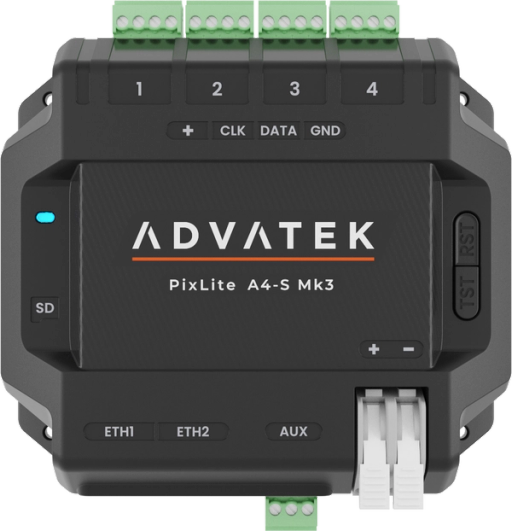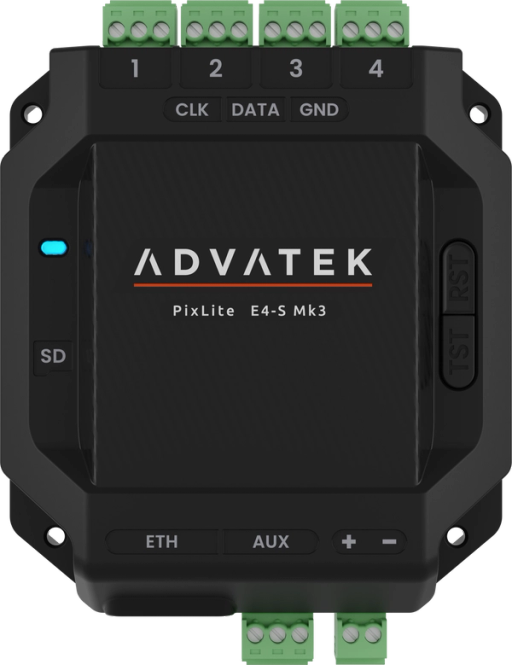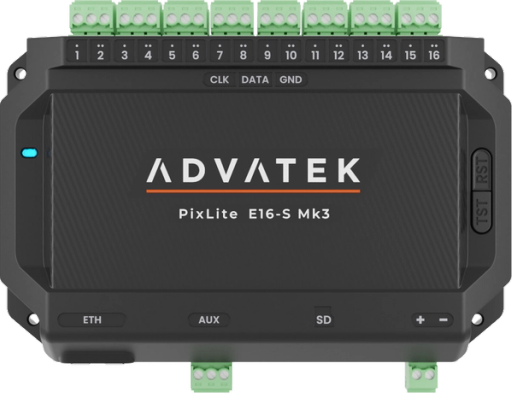Overview
This pixel protocol was designed by Lianxinke in China. It uses a non-differential DMX512 protocol to drive pixel chips. The control circuit comes in a SOP8 package, allowing for more flexibility with LED choice.

UCS512B pixel protocol
Specifications
PixLite Mk1 | |
PixLite Mk2 | |
PixLite Mk3 | |
Clock Type | Serial DMX (Single Wire) |
Color Resolution | 8 Bits |
Current Control | |
Physical Package | SOP8 |
RGB | |
RBGW | |
Input Voltage | 5V |
Output Pixel Voltage | 5 - 24V |
PWM Rate | 3000Hz |
Suitable Camera | Up to 100fps |
Data Transfer Rate | 250 - 750kbps |
Redundant Data Line |
Considerations for Use
Advantages
- Up to 24V, allowing for very long cable lengths
- High PWM rate allows for filming these pixels with cameras up to 100fps
Disadvantages
- Data-only restricts refresh rates to be limited by the speed of the protocol, which can be slow
- Only 8 bits of data for each color makes dimming curves less smooth
- No redundancy in data
- Operation relies on addressing of the pixels to be correct from the factory (See Operational Behavior below)
Operational Behavior
UCS512B will work with the generic DMX512 protocol as is, but this assumes correct factory set addressing of the individual pixels (addressing is usually pre-set at the factory in the pixels themselves, by using the external addressing line).
PixLite Support
Are you looking for UCS512B pixel drivers that work with Art-Net or sACN?
All PixLite Mk2 and Mk3 products support UCS512B as an available Pixel IC type, so get in touch with us to find out how the lighting specialists at Advatek can support you in your pixel lighting project.
Note: When configuring your PixLite device, select 'DMX512' as your Pixel Type. This is the equivalent protocol that will allow you to use UCS512B pixels.

PixLite® A4-S Mk3
Driving up to 24 universes of data, and offering easy mounting, sleek design and electrical fault protection — what’s not to love?

PixLite® E4-S Mk3
The E-series LED pixel controller is made for tighter budgets thanks to its ability to drive up to 24 universes of LED pixel control and route power directly to LEDs.

